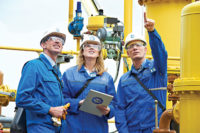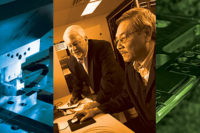I love to read, whether it’s a novel, nonfiction or newspapers. And my friends seem to have similar interests. When talking about books lately, a friend and I realized we were both in the middle of the same one. (Have you ever read anything by Jeffrey Eugenides? If not, consider adding one of his books to your reading list.) But whenever I read about current events, the topic that seems to keep coming up is manufacturing.
In between covering Michael Bloomberg, the election, and “why women still can’t have it all,” the Atlantic regularly writes about manufacturing. In “The Insourcing Boom” in the December issue, Charles Fishman describes the journey of a GE water heater. It was previously made in China, but now the company is producing one in Kentucky. The time to market for the Chinese water heater was about five weeks. But in Louisville, the total time from the factory to the warehouse is half an hour.
Not too bad. In fact, the article says that the outsourcing rush may have been a mistake all along. This is no surprise to Harry Moser. Moser, you may remember, was our 2012 Quality Professional of the Year. He is mentioned in the article because of his work on reshoring. Through the creation of his Reshoring Initiative, he has been trying to bring manufacturing jobs back to the United States for years. Finally it seems as if companies are listening. In fact, so is the White House. Last year Moser met President Obama, Vice President Biden, the Secretaries of Labor and Commerce, as well as about a dozen company presidents during a manufacturing panel.
The Atlantic’s national correspondent James Fallows also weighed in on the manufacturing industry with his feature, “Mr. China Comes to America.” There’s no shortage of discussion about China, but Fallows is a great source of information on the country.
In the article, Fallows describes the promising landscape for American manufacturing today. “Through most of post–World War II history, the forces of globalization have made it harder and harder to keep manufacturing jobs in the United States,” Fallows writes. “But the latest wave of technological innovation, communications systems, and production tools may now make it easier—especially to bring new products to market faster than the competition by designing, refining, and making them in the United States. At just the same time, social and economic changes in China are making the outsourcing business ever costlier and trickier for all but the most experienced firms.”
If you’d like to learn more about global manufacturing trends, I would suggest his latest book, “China Airborne.” The book details the rise of the Chinese aviation industry. It is actually a fascinating story, though your friends may not believe you. When I told a friend what I was reading, she asked, “For fun?” So in addition to learning something new, you won’t be reading the same thing as everyone else.



